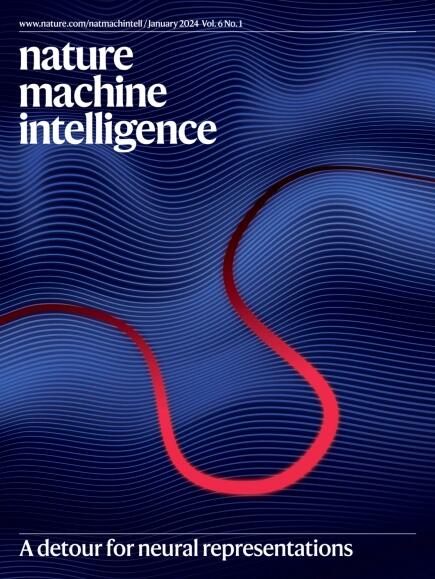一种多关节软外套可以改善脊髓损伤患者的肩部和肘部运动功能
IF 23.9
1区 计算机科学
Q1 COMPUTER SCIENCE, ARTIFICIAL INTELLIGENCE
引用次数: 0
摘要
脊髓损伤(SCI)破坏神经肌肉控制,严重影响独立性和生活质量。尽管上肢可穿戴机器人在功能恢复方面具有相当大的前景,但大多数现有的原型已经在脊髓损伤患者中得到了最低限度的验证,并且几乎只针对手的打开和关闭。我们推出了一款轻量级的模块化辅助软性外骨骼服,该外骨骼服使用基于轻质织物的气动致动器,通过惯性传感器控制,同时自动支持肩部外展和肘关节弯曲或伸展运动。首先在11名健康志愿者中验证了单个肘关节模块,随后在15名颈椎脊髓损伤患者(C4-C7, AIS A-D)中测试了肩部模块。在脊髓损伤参与者中,外伤服的帮助增加了静态耐力时间(超过250%),并降低了参与动态任务的主要肌肉的活动(高达50%)。保留抓握能力的两名脊髓损伤参与者在辅助下也提高了他们在盒子和方块测试中的得分。此外,软驱动提供了一个安全、舒适和易于使用的解决方案,得到了参与者的积极赞赏。总的来说,这些结果提供了令人鼓舞的证据,表明外伤服可以增强上肢运动能力,并可能最终转化为脊髓损伤患者更大的功能独立性和生活质量。介绍了一种轻量级的模块化辅助软性外服,它支持颈脊髓损伤患者的肩部和肘部运动。该设备增强了耐力和活动范围,减少了肌肉消耗,提高了临床测试分数。本文章由计算机程序翻译,如有差异,请以英文原文为准。

A multi-joint soft exosuit improves shoulder and elbow motor functions in individuals with spinal cord injury
Spinal cord injury (SCI) disrupts neuromuscular control, severely affecting independence and quality of life. Although upper limb wearable robots hold considerable promise for functional restoration, most existing prototypes have been validated minimally in people with SCI and target almost exclusively hand opening and closing. We introduce a lightweight, modular assistive soft exosuit that simultaneously and automatically supports shoulder abduction and elbow flexion or extension movements using lightweight fabric-based pneumatic actuators, controlled through inertial sensors. The individual elbow modules were first validated in 11 healthy volunteers, and subsequently tested, together with the shoulder module, in 15 individuals with cervical SCI (C4–C7, AIS A–D). In the SCI participants, exosuits assistance resulted in increased static endurance time (by more than 250%), and lower activity of the primary muscles involved in dynamic tasks (by up to 50%). The two SCI participants retaining prehensile capability also improved their scores in the box and block test when assisted. Moreover, the soft actuation provided a safe, comfortable and easy-to-use solution that was positively appreciated by the participants. Collectively, these results provide encouraging evidence that exosuits can augment upper limb motor performance, and may ultimately translate into greater functional independence and quality of life for the SCI population. A lightweight, modular assistive soft exosuit is introduced, which supports shoulder and elbow movement in individuals with cervical spinal cord injury. The device enhances endurance and range of motion, reduces muscle effort and improves clinical test scores.
求助全文
通过发布文献求助,成功后即可免费获取论文全文。
去求助
来源期刊

Nature Machine Intelligence
Multiple-
CiteScore
36.90
自引率
2.10%
发文量
127
期刊介绍:
Nature Machine Intelligence is a distinguished publication that presents original research and reviews on various topics in machine learning, robotics, and AI. Our focus extends beyond these fields, exploring their profound impact on other scientific disciplines, as well as societal and industrial aspects. We recognize limitless possibilities wherein machine intelligence can augment human capabilities and knowledge in domains like scientific exploration, healthcare, medical diagnostics, and the creation of safe and sustainable cities, transportation, and agriculture. Simultaneously, we acknowledge the emergence of ethical, social, and legal concerns due to the rapid pace of advancements.
To foster interdisciplinary discussions on these far-reaching implications, Nature Machine Intelligence serves as a platform for dialogue facilitated through Comments, News Features, News & Views articles, and Correspondence. Our goal is to encourage a comprehensive examination of these subjects.
Similar to all Nature-branded journals, Nature Machine Intelligence operates under the guidance of a team of skilled editors. We adhere to a fair and rigorous peer-review process, ensuring high standards of copy-editing and production, swift publication, and editorial independence.
 求助内容:
求助内容: 应助结果提醒方式:
应助结果提醒方式:


